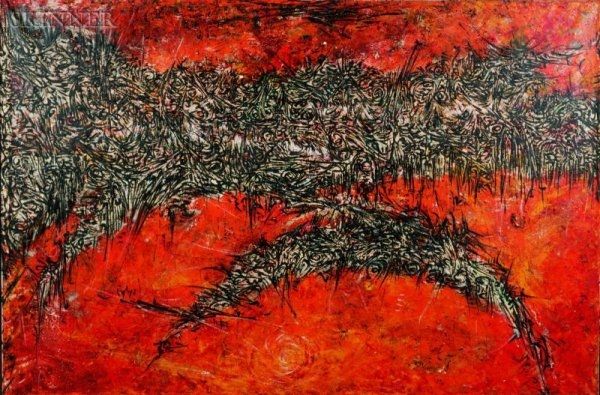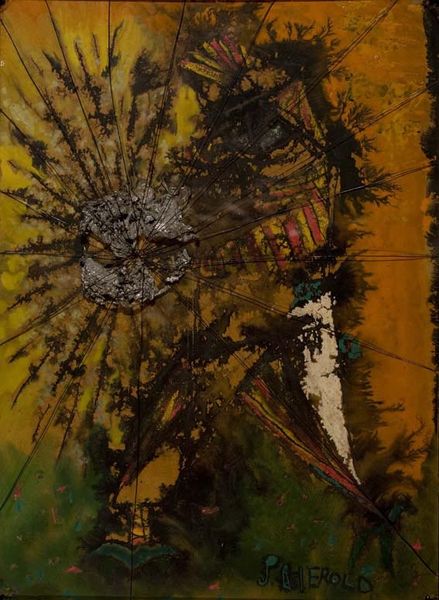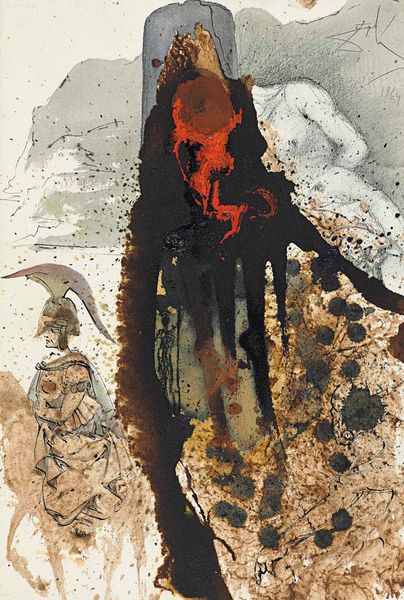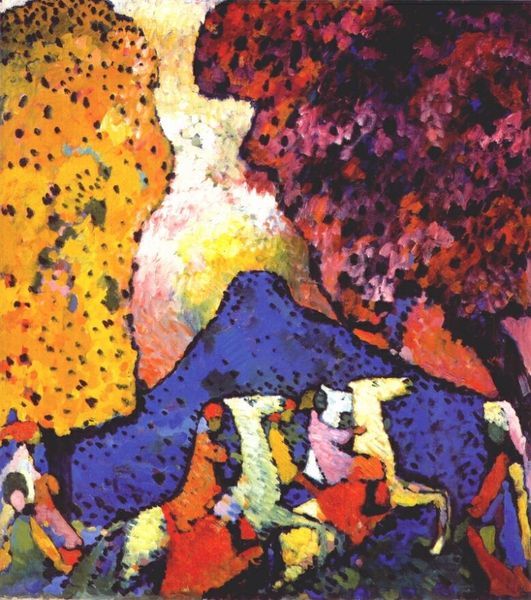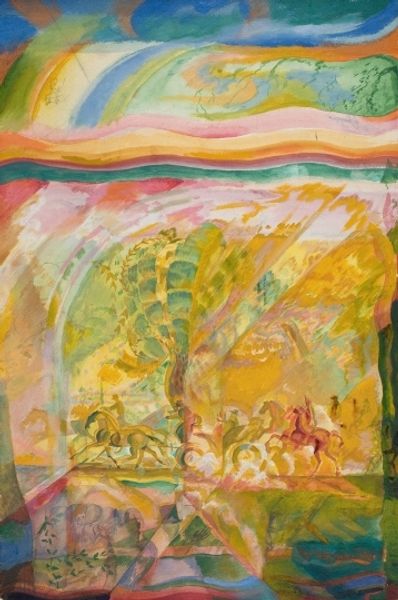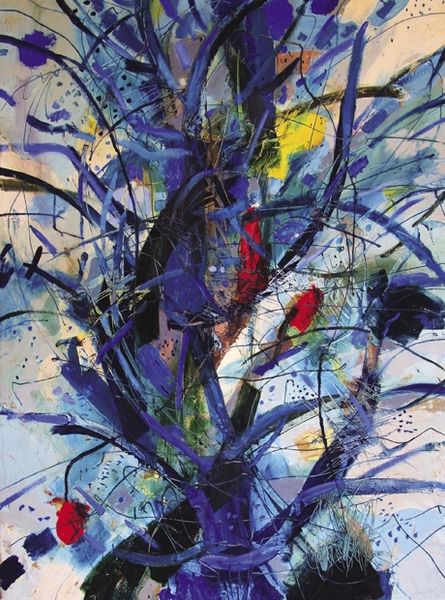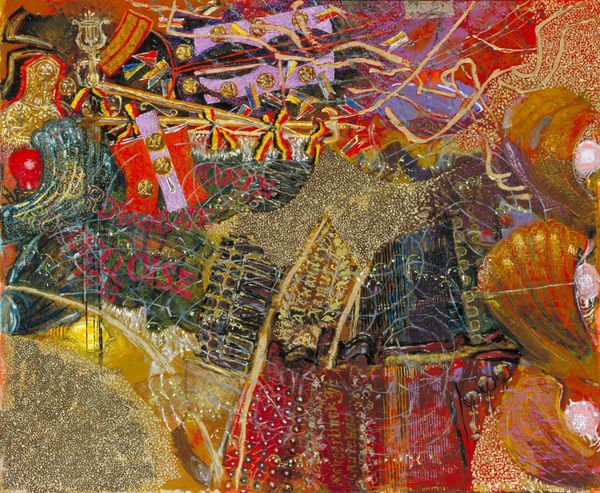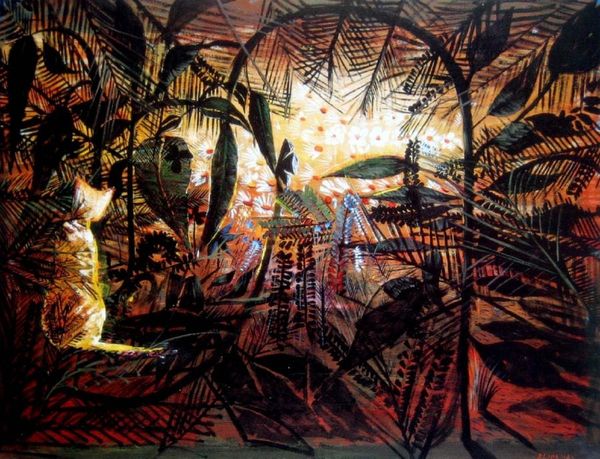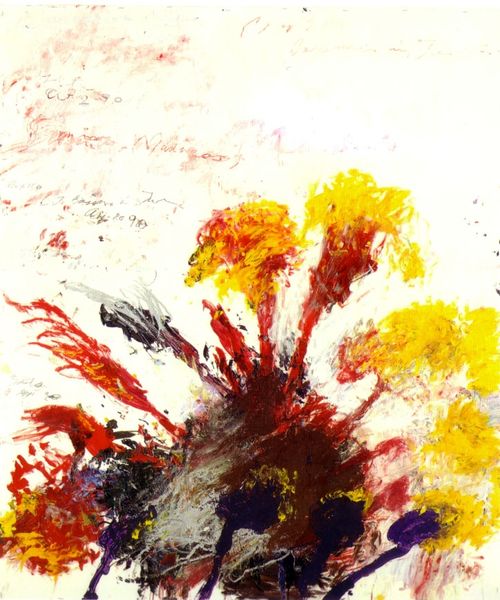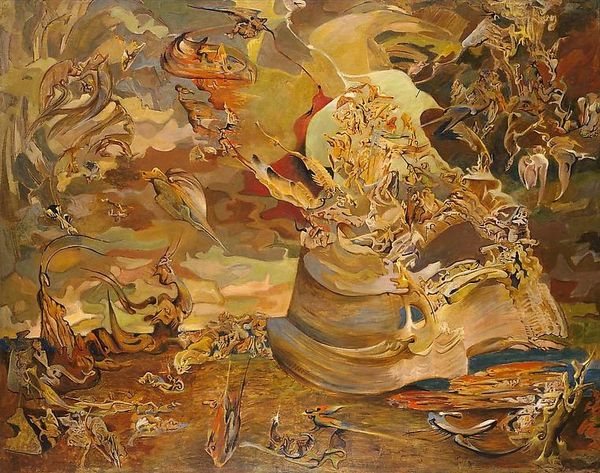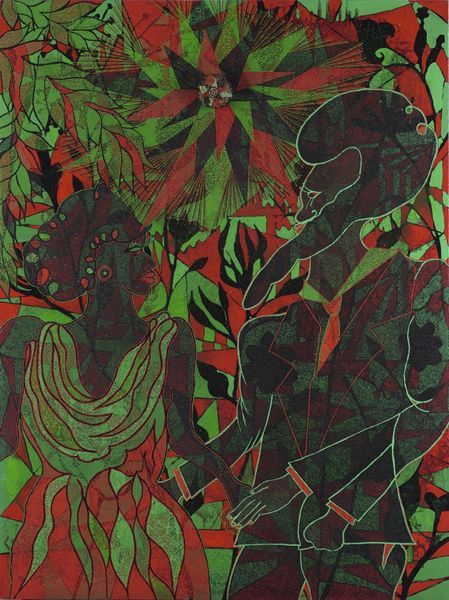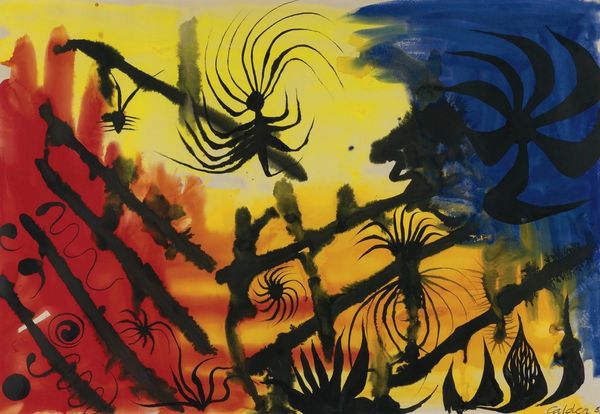
painting, acrylic-paint
#
impressionist
#
abstract painting
#
narrative-art
#
painting
#
impressionist painting style
#
landscape
#
impressionist landscape
#
acrylic-paint
#
figuration
#
acrylic on canvas
#
expressionism
#
modernism
#
expressionist
Copyright: Charles Blackman,Fair Use
Curator: We are looking at Charles Blackman’s *Autumn Garden No. 3*, an acrylic on canvas work. Editor: Well, I’m immediately struck by the rather unsettling juxtaposition of the figure in red against the enveloping, autumnal hues. It feels both inviting and slightly claustrophobic, like entering a space of complex and possibly conflicting narratives. Curator: The use of acrylic allows Blackman to achieve a layered, almost textural effect, which contributes to the dreamlike quality of the piece. Notice the careful construction of the pictorial space, where elements of figuration, the figure and the dog, meet abstraction. The composition invites contemplation on the boundaries of the familiar. Editor: For me, it's interesting to consider what 'autumn garden' means as a space. Is it private? Is it manicured? Looking at Blackman's mark-making and colour choices, this work gestures toward notions of seasonal labour – collecting, shedding, the cultivation of a landscape… these things would require specific skills and hands. Curator: True, and one could interpret the symbolism through a psychoanalytic lens – the staircase, the hidden face… they create an allegorical staging of inner worlds. The whiteness of the dog adds an interesting formal contrast to the dark ground and red-clad figure. The relationships between these objects create the semantic complexity of the piece. Editor: Indeed. Also, if we read those stairs as being "steps" toward something, then that invites questions about access, who and what is excluded. And if we consider that the materials and labor came from somewhere, then questions emerge surrounding class, privilege and hierarchies that determine the availability of "autumn gardens." Curator: Your point emphasizes how form gives rise to critical discourses concerning both historical and contemporary contexts. For me, the expressive nature of this canvas comes primarily from Blackman's arrangement of contrasting pictorial components, allowing the viewer to find their own associations through symbolic interpretation. Editor: Agreed, but in bringing the idea of a ‘garden’ into focus, one cannot elude material conditions related to production and consumption; hopefully prompting viewers to critically reflect on how resources like this ‘garden’ are accessed and by whom. Curator: A compelling argument that contextualizes aesthetics within wider socioeconomic frameworks. Thank you for helping me to broaden the interpretation of this piece. Editor: Thank you! Thinking about what shapes how these things materialize is always something to reflect on.
Comments
No comments
Be the first to comment and join the conversation on the ultimate creative platform.

